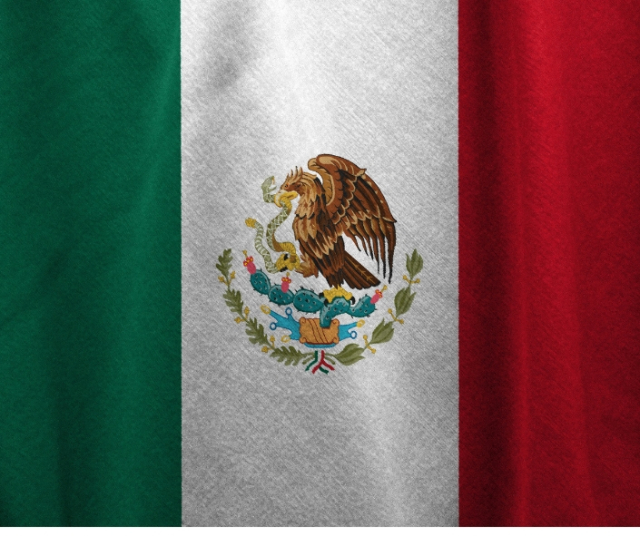The flag of Mexico , with its iconic green, white and red colors, waves proudly as a patriotic symbol that encapsulates the history, struggle and identity of a nation. Beyond its vibrant colors, the Mexican flag is a canvas loaded with meaning and symbolism, which is intertwined with the crucial moments in the fight for independence and the construction of a sovereign country. In this article, we will explore in detail the fascinating history of the Mexican flag, from its origins to its relevance today.
The First Steps: The Pre-Hispanic Era
The history of the Mexican flag has its roots in the rich pre-Hispanic tradition of the territory we know today as Mexico. Before the arrival of the Spanish conquistadors, the indigenous civilizations that inhabited these lands used flags and banners as symbols of unity and belonging. While these banners were not exactly like the modern flag, they did set the stage for the use of visual symbols in national contexts.
The Road to Independence: Hidalgo's Banner
Mexico's path to independence was a tumultuous period marked by revolutionary leaders and their quest for freedom. In 1810, Miguel Hidalgo y Costilla, one of the most influential leaders in the fight for independence, adopted a banner that would become an important symbol in the history of the Mexican flag. This banner, known as the "Hidalgo Banner", featured the image of the Virgin of Guadalupe and was used as a call for unity in the fight against colonial oppression.
The Evolution of the National Symbols: Iturbide and Guerrero
The consummation of Mexican independence led to the emergence of new national symbols that reflected the identity and aspirations of the newly formed nation. Agustín de Iturbide and Vicente Guerrero, leaders of the insurgent armies, united under the Plan of Iguala in 1821. Together they adopted a tricolor flag that represented the ideals of independence and union. This flag consisted of three vertical stripes: green, white and red, in that order.
The Current Flag: Meaning and Design
The current flag of Mexico, which has remained largely unchanged since 1821, features three equal-sized vertical stripes. Green represents the hope and nature of the country, white symbolizes unity and purity, while red represents the blood shed by national heroes. In the center of the white stripe is the National Shield, which shows an eagle devouring a snake on a cactus.
The National Coat of Arms: A Symbol of Identity
The National Shield, located in the center of the white stripe of the flag, is an iconic and deeply significant symbol for Mexico. Its design is based on an ancient legend that tells of the founding of Mexico-Tenochtitlan, the city that would eventually become Mexico City. The image of the eagle devouring a snake on a cactus grows from an island in the middle of a lake, evoking the connection between the pre-Hispanic past and colonial history.
A Symbol of National Identity
The flag of Mexico is not just a piece of cloth; it is a symbol that unites the nation and remembers its history. Over the years, the flag has witnessed moments of triumph and challenge in the country's history. From the fight for independence to social and political movements, the flag has been a beacon of hope and resistance.
Flag Day and Celebrations
Flag Day is celebrated in Mexico on February 24, in honor of the adoption of the tricolor flag in 1821. On this date, ceremonies and events are held throughout the country to honor the national symbol and reflect on its meaning. Schools, government institutions and civic organizations often carry out commemorative events that highlight the importance of the flag in the history and identity of Mexico.
The Legacy of the Mexican Flag
The flag of Mexico remains a pillar of national identity and a reminder of the nation's shared history. From revolutionary leaders to ordinary citizens, the flag has inspired generations to fight for freedom and justice. Every time the flag flutters in the wind, it carries with it a legacy of struggle, hope, and unity that lives on in the hearts of Mexicans.
The flag of Mexico is a symbol of the country's rich cultural and geographical diversity. Through its colors and its design, the flag reflects the multiplicity of identities that make up Mexico. In a country with such a complex and multifaceted history, the flag unites Mexicans under a common symbol, reminding them that they are part of a nation rich in traditions, history and shared values.
